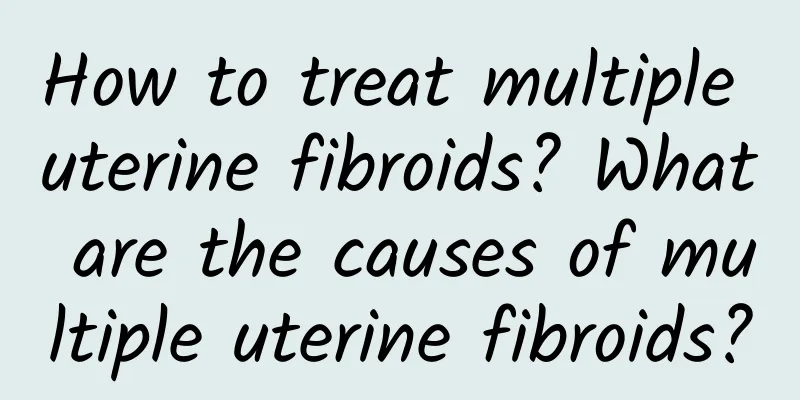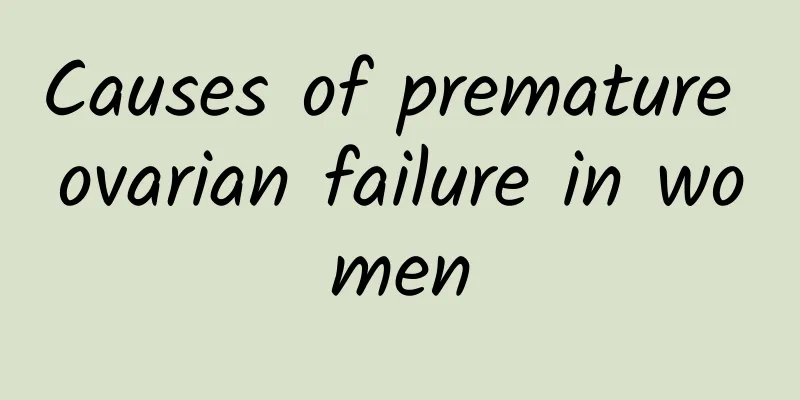Can pelvic peritonitis be cured by taking medicine?

|
The occurrence of pelvic peritonitis is also related to bacterial infection, so everyone needs to understand the occurrence of this disease as early as possible, and must actively treat it. In addition, you must pay attention to your diet and treatment methods to avoid pelvic adhesions and affect your health. So what is the traditional Chinese medicine treatment for pelvic peritonitis? How to use Chinese medicine enema to treat pelvic peritonitis Pelvic peritonitis is a common disease among women and is also a relatively difficult disease to cure. It often occurs during menstruation, after childbirth, after abortion, cesarean section or after gynecological surgery, when bacteria enter the wound and cause infection. Most of the cases of this disease are caused by damp-heat stagnation. The treatment principle is to remove dampness, clear heat and detoxify, and assist with promoting blood circulation and relieving pain. If the lump is obvious, add blood stasis dispersing and knot dispersing products. Drug composition: honeysuckle 15g, forsythia suspensa 15g, patrinia 15g, peach kernel 10g, peony bark 15g, frankincense 8g, myrrh 8g, phellodendron 10g, motherwort 15g, coix seed 30g. For patients with severe damp-heat, add plantain seeds 15g and gardenia 10g; for patients with obvious lumps, add soapberry 15g, Fritillaria thunbergii 15g, three-edged 10g, and zedoaria 10g. Add 500ml of water to the above medicines, soak for 30 minutes, boil into 100ml, pour out, add 300-400ml of water, boil into 100ml, combine the two decoctions, divide into 2 times for enema, retain for more than 2 hours, once a day, 10 times as a course of treatment, stop taking the medicine during menstruation. Take the medicine continuously for 2-3 courses of treatment. Effect of Chinese medicine enema on the treatment of pelvic peritonitis Efficacy criteria: cure: disappearance of symptoms and signs, normal gynecological examination, normal B-ultrasound examination, no recurrence within half a year; improvement: subjective symptoms disappear or are significantly alleviated, gynecological examination shows that uterine and adnexal tenderness is significantly alleviated but still exists, or occasional recurrence within half a year; ineffectiveness: clinical symptoms and signs have not changed much from before treatment. Modern medicine believes that acute pelvic peritonitis is mainly characterized by tissue congestion and edema, adhesion, exudation of inflammatory secretions, infiltration of a large number of inflammatory cells, and even the formation of abscesses; chronic pelvic peritonitis is mainly characterized by tissue adhesion, edema, or varying degrees of congestion. Traditional Chinese medicine does not have the name of "pelvic peritonitis". This disease is scattered in the categories of "menstrual disorders", "metrorrhagia", "dysmenorrhea", "leucorrhea", "infertility", and "vitiligo". The symptoms of acute pelvic peritonitis are summarized as follows: 1. When the disease occurs, there is lower abdominal pain and fever. If the condition is serious, there may be chills, high fever, headache, and loss of appetite. 2. If the disease occurs during menstruation, there may be increased menstrual flow and prolonged menstruation. If the disease occurs outside of menstruation, there may be increased leucorrhea. If there is peritonitis, digestive system symptoms such as nausea, vomiting, abdominal distension, diarrhea, etc. will appear. 3. If an abscess is formed, there may be a lower abdominal mass and local compression and irritation symptoms; if the mass is located in the front, bladder irritation symptoms may occur, such as difficulty urinating and frequent urination. If it causes cystomyositis, there may also be urinary pain. If the mass is located in the back, there may be rectal irritation symptoms. If it is outside the peritoneum, it may cause diarrhea, tenesmus and difficulty defecation. Warm reminder, everyone should understand the occurrence of pelvic peritonitis as early as possible, actively seek treatment, and pay attention to their own hygiene to avoid bacterial infection. Also pay attention to methods of promoting blood circulation and relieving pain to avoid swelling and pain in the body, which will lead to more effects. Everyone should actively seek treatment to avoid causing more trouble. I hope everyone understands the occurrence of the disease as early as possible. |
<<: What medicine is good for pelvic peritonitis
>>: What medicine is used for pelvic peritonitis
Recommend
Lose weight and increase appetite? Three unbeatable rules! Nutritionist Li Ziyi: 6 fat-reducing foods that reduce gastrointestinal absorption
Delicious food always whets your appetite, but yo...
Will uterine fibroids cause abdominal pain?
Will uterine fibroids cause abdominal pain? The p...
What are the symptoms of pelvic inflammatory disease in women
What are the symptoms of pelvic inflammatory dise...
Explain some symptoms and characteristics of cervicitis in detail
The most common symptoms of cervicitis need to be...
Losing weight is not just about weight. Exercise at home to reduce body fat
Are you still obsessed with the numbers on the sc...
How much does it cost to have an abortion?
The cost of an abortion is about 500 yuan to 3,00...
What are the early symptoms of cervical erosion?
Cervical erosion should be treated as soon as pos...
What to do if Bartholinitis often occurs
Bartholinitis is an uncommon gynecological diseas...
Precautions after microtubule visual painless abortion
In the advanced medical technology of modern soci...
Why is cervical erosion becoming more and more common at younger ages? What should you pay attention to in your diet for cervical erosion?
Why are cervical erosion happening to younger and...
Common clinical symptoms of chronic adnexitis
Chronic adnexitis is a type of adnexitis, and man...
What are the diagnostic criteria for dysmenorrhea?
Dysmenorrhea is a common disease in our daily lif...
How to relieve the cramping pain caused by dysmenorrhea?
How to relieve the cramping pain caused by dysmen...
TCM Diagnosis of Pelvic Effusion
Pelvic effusion is a common gynecological disease...
What are the benefits of drinking saffron for women? Enhance immune function
Drinking saffron can effectively enhance the body...









